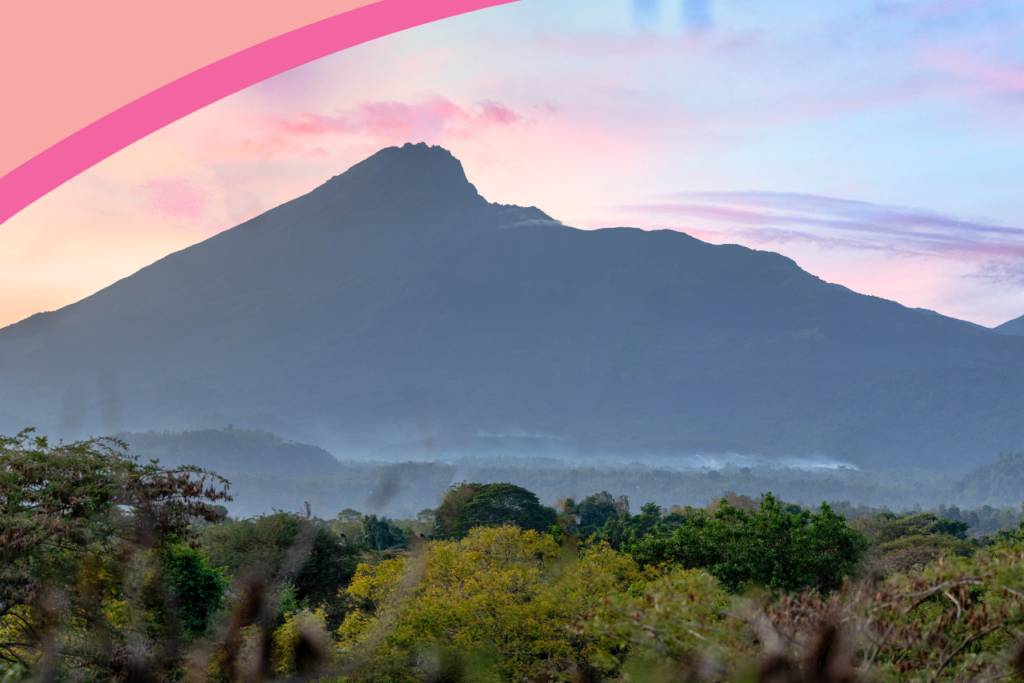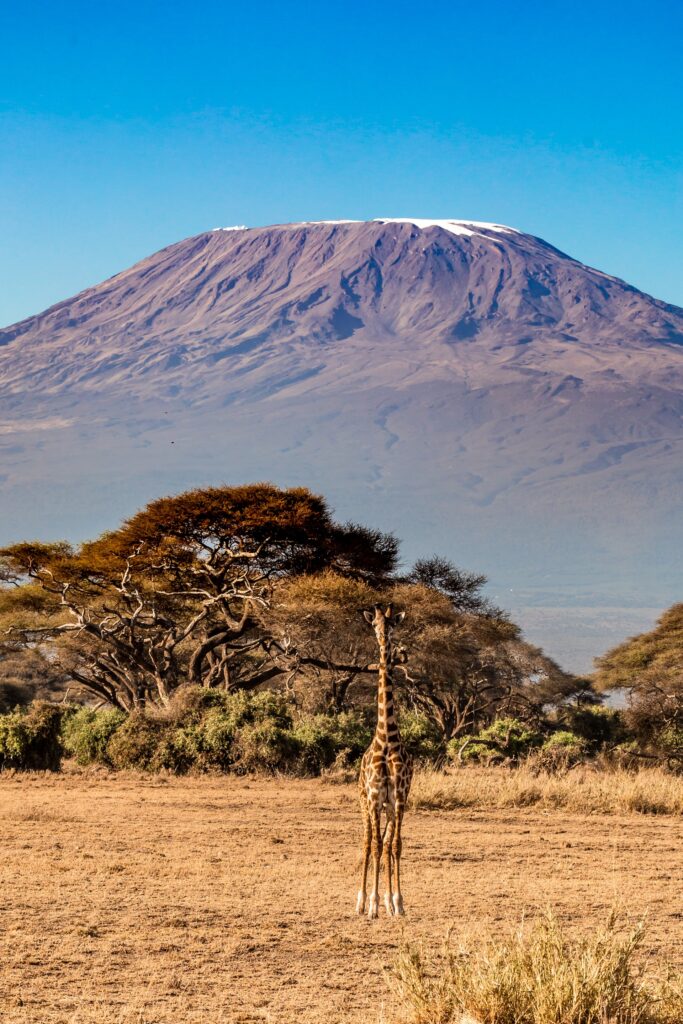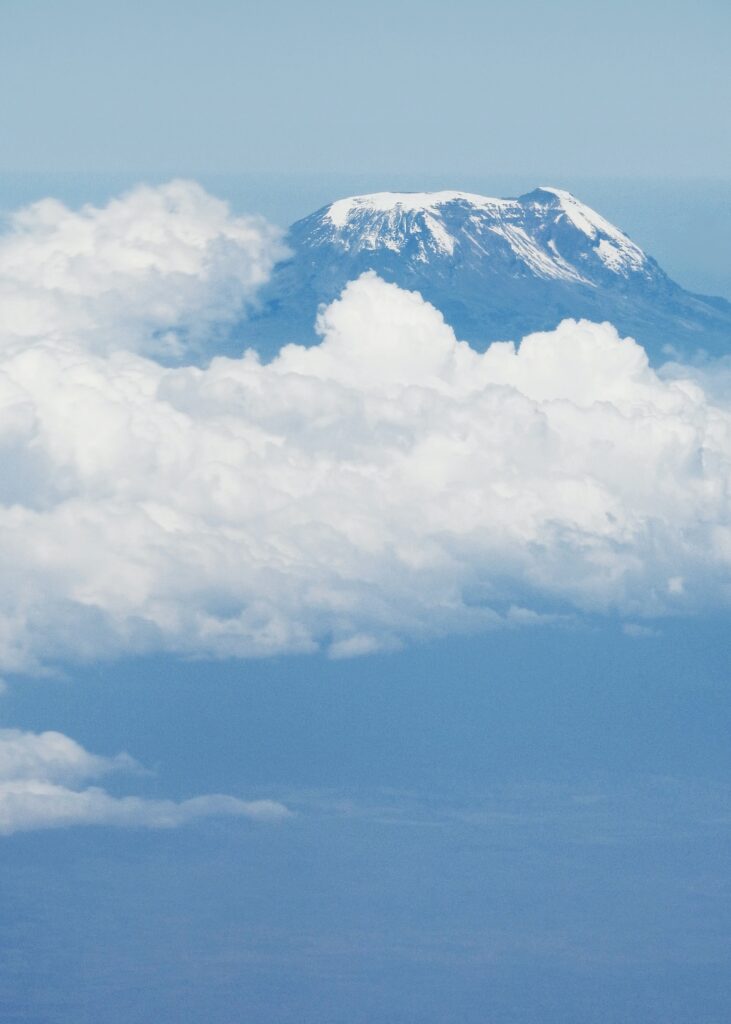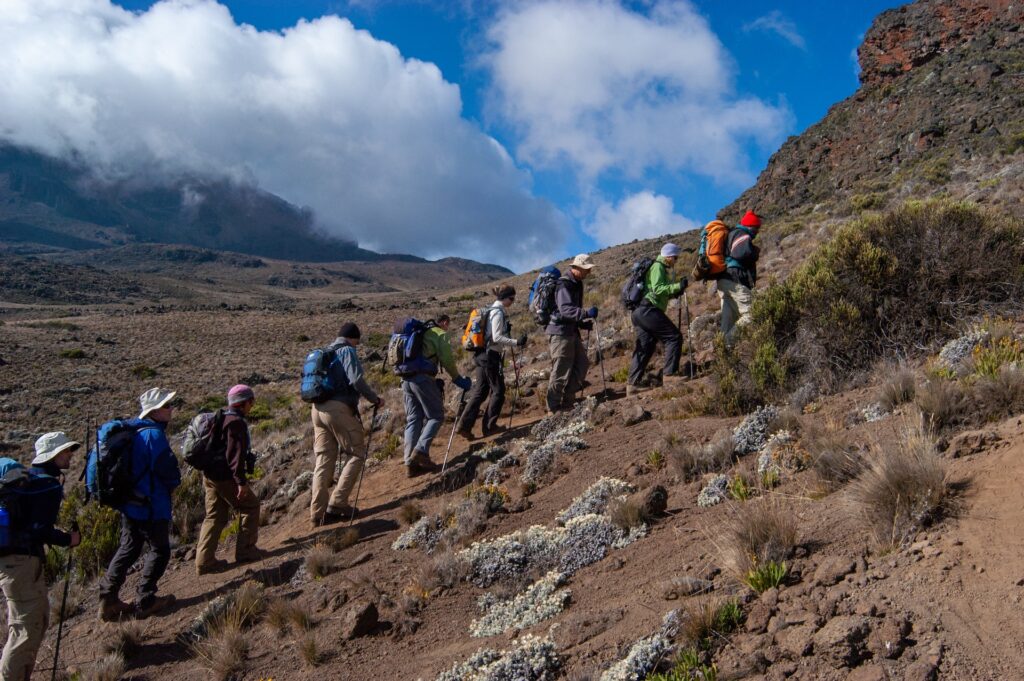Mount Kilimanjaro. The very name evokes visions of a majestic, snow-capped peak piercing the vibrant blue African sky. Towering at nearly 19,341 feet, it is Africa’s highest peak and the highest free-standing mountain globally. This geological marvel, awake amid the tranquillity of the Tanzanian landscape, is much more than just a mountaineer’s paradise. It’s a living testament to the haunting beauty that only the triumphant union of persistence and nature can yield.
With that in mind, today we’re virtually hiking Kilimanjaro via its revered Lemosho Route. Care to join us?
Getting There
Mount Kilimanjaro is located in the Kilimanjaro Region of Tanzania in Eastern Africa. A beacon visible from miles around, it sits north-east of Tanzania, close to the border with Kenya.
Reaching the majestic Mount Kilimanjaro begins with an international flight into the Kilimanjaro International Airport (JRO). Many airlines operate flights from Europe, Asia, and parts of North America directly to JRO. Whilst there are no direct flights from the UK to JRO, a brief transit in Nairobi, Istanbul, Doha or Addis Ababa is common. Return flights from London Heathrow or Gatwick usually clock in at around £500.
Once there, the city of Moshi, situated at the base of Mount Kilimanjaro, is about 40 kilometres away. Traversing this leg of the journey can be done through pre-arranged shuttles, taxis, or buses.

Popular Routes For Hiking Mount Kilimanjaro
There are several routes to conquer Mount Kilimanjaro each named for their own unique reasons and allure. For brevity, let’s review three of the most popular ones: the Marangu, the Machame, and the Lemosho routes.
Marangu Route
Known colloquially as the “Coca-Cola” route, Marangu is the oldest and most well-travelled. As the only route offering hut accommodation options, it’s renowned for being relatively comfortable. However, its quick ascent means it has the lowest success rate; ascending too fast can provoke altitude sickness.
Machame Route
Also known as the “Whiskey” route, interestingly, not because of some association with the alcoholic beverage, but because this trail is deemed tougher than its “Coca-Cola” counterpart. The Machame Route is preferred by experienced hikers for its challenging nature and spectacular varied scenery despite having steeper climbs.
Read: 5 must see trekking destinations worldwide
Lemosho Route
Relatively new, longer, and undoubtedly, one of the most scenically beautiful, adventurers who choose the Lemosho route get to spot varied wildlife, traverse lush rainforest and moorland, and revel in the mystical Shira Plateau’s awe-inspiring beauty before converging with the Machame route. This less crowded route provides time for better altitude acclimatisation, thus higher summit success rates.


Some Top Tips For Tackling The Lemosho Route
Winding between dense forests and sprawling moorlands, the route displays unparalleled, captivating sceneries. Provided below are some practical tips, accessible milestones, and cautionary advice.
Slow & Steady Wins the Race
The route is known for its slow ascent, providing ample time for acclimatisation. Use this to your advantage and don’t rush through the climb. “Pole Pole,” which means “slowly slowly” in Swahili, should be your mantra for a successful ascent.
Summiting In Low Light
Though the 7 days Lemosho route is popular, summiting more generally starts in the early morning hours of Day 8 from Barafu to Stella’s Point. You’ll be marching in the dark with only a headlamp guiding you. Train yourself to the idea of walking at a high altitude in low temperatures and minimal light for a more confident climb.
Layered Clothing
The route cascades itself from hot lowlands to icy summit zones and the occasional bout of wet weather. Dress in layers that can be reshuffled as the day’s temperature wax and wane; extra layers for cool evenings, and lightweight UV protective clothing for the daytime hiking.
Proper Hydration
A dehydrated body is more susceptible to altitude sickness. Ensure you drink a minimum of 3-4 litres of water daily. Remember, once you cross the Londorossi Gate, access to spring water along the trail is easier.
Camping Essentials
Unlike other routes, Lemosho offers only tented accommodation. Ensure your gear includes a good quality, four-season sleeping bag and a well-insulated mat for protection against the cold ground.
Identify Your Landmarks
Significant points on the path, like Big Tree Camp and Moir Hut, might prove challenging for beginner hikers. Familiarise yourself with these locations and gather your strength before reaching there.

Team Work
Remember, you are not alone in this journey. Lean on your professional guides and porters who have navigated this trek numerous times. Their wisdom, guidance, and encouraging presence can make a big difference.
Health Comes First
Oxygen levels decrease progressively as you ascend. If at any point you feel noticeably sick or dizzy, inform your guides right away. If necessary, there’s no shame in descending as your safety always comes first.
The Journey As Much As The Destination
Lastly, as you traverse through this idyllic course weaving itself from untamed forest pathways to stunning clearing views of Kibo, stay receptive. Remember, the hike to the top of Kilimanjaro is meant to be enjoyed as much as the view from the summit itself. After all, it’s as much about the journey as the destination, as they.
The Bottom Line
Climbing Kilimanjaro is undoubtedly more than just another mountain hike; each of the paths up the mountain tells its tale, redefining the concept of adventure on each twist and turn.
From the unassuming Marangu to the gruelling Machame and the off-the-beaten-path Lemosho, your date with Kilimanjaro promises to be an exquisite dialogue between you and the raw beauty of nature. It’s an affirmation of the simple, yet deep joy that awaits us when we dare navigate and appreciate the world outside the one we’ve built for ourselves. Get ready to embark on this once-in-a-lifetime trip, with none other than Kilimanjaro as your unforgettable partner.





